While the naked eye can unveil a plethora of celestial wonders, using binoculars can unlock even more intriguing sights in the night sky. However, selecting the right binoculars for stargazing can be a daunting task, especially for beginners. One might wonder if it’s more prudent to start saving for a superior telescope instead. In this guide, we will delve into these considerations and offer some tips on how to choose the perfect binoculars for your stargazing adventures.
Why should an amateur astronomer invest in binoculars?
If you have an interest in astronomy, it is highly recommended to purchase a pair of binoculars. In fact, they are an excellent first instrument for beginners. But what exactly are binoculars?
Binoculars are compact and affordable optical devices that are well-suited for observing the night sky with both eyes. While not everyone can afford a telescope, binoculars are within reach for many individuals.
Even a small pair of binoculars can unveil a multitude of breathtaking sights. By using binoculars, you will address several advantages simultaneously:
- You can start observing celestial objects almost immediately, as binoculars are considerably cheaper than telescopes and do not strain your personal budget.
- Embarking on stargazing with binoculars will enable you to cultivate your interest in astronomy and transform it into a dedicated pursuit. While fantasizing about owning a telescope and diligently saving money for it, it’s possible for this aspiration to remain elusive, causing you to lose enthusiasm for your hobby in the meantime.
- However, you can still immerse yourself in the intricacies of studying constellations, observing planets, the Moon, and a plethora of other celestial wonders – all of which will prove invaluable once you eventually acquire a telescope.
Most astronomy enthusiasts, whether they are beginners or more experienced, consider binoculars to be an essential part of their equipment. Binoculars offer the advantage of being able to observe the sky quickly and easily, without the need for extensive preparation. They are also portable and can be easily taken anywhere. Additionally, binoculars are useful for examining specific areas of the sky in detail before using a telescope, and they can even help locate specific celestial objects, saving time and expanding one’s knowledge.
Therefore, having a good pair of binoculars is crucial for anyone interested in amateur astronomy. They serve as a valuable tool for starting and enhancing your astronomical observations.
Benefits of using binoculars
Binoculars offer several advantages over telescopes:
- Binoculars provide a wide field of view, allowing for the inspection of large areas of the sky and easy identification of various objects.
- Unlike telescopes, binoculars produce a straight image, rather than an inverted one. This feature proves especially useful when studying constellations, as the view through binoculars closely resembles star charts or planetarium programs like Stellarium.
- Binoculars are designed to be used with both eyes, resulting in increased clarity and detail. When comparing binoculars and telescopes with the same aperture (lens diameter), binoculars have the ability to reveal faintly luminous objects that may not be visible with telescopes.
- Using binoculars for observation is more comfortable. When using both eyes, they experience less fatigue compared to using a telescope.
- Binoculars are compact and lightweight devices that are always ready to use and do not require any preparation. Once you take them out of the case, you can use them right away.
- Binoculars are a versatile tool that can be useful in various everyday situations, even if your interest in astronomy wanes. Telescopes, on the other hand, are only suitable for their specific purpose, while binoculars can be handy for camping, hunting, fishing, and many other activities.
Therefore, even if you have a telescope, it is not advisable to overlook the benefits of binoculars. These tools complement each other perfectly. There’s no need to “overkill” for every task, especially in the beginning.
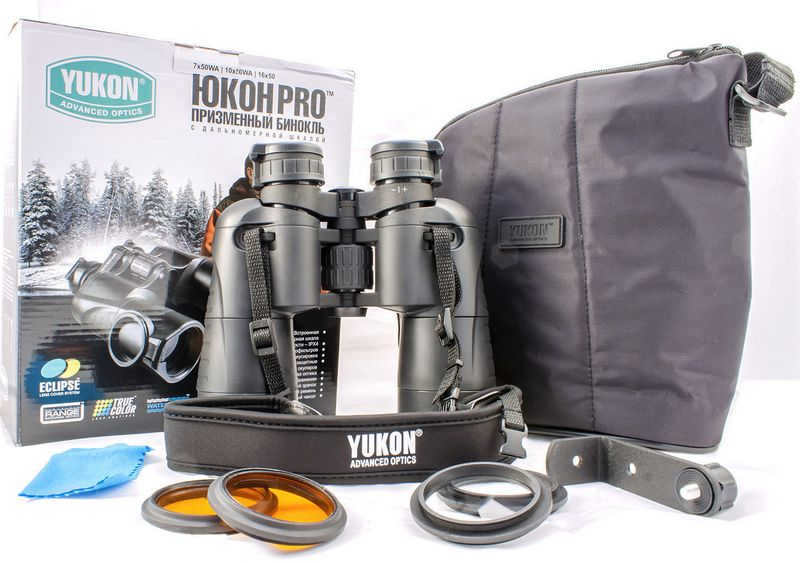
These Yukon prism binoculars are a typical choice for many. They come in different magnifications – 6, 10, and 16x. They are particularly well-suited for astronomical purposes, making them a great option for stargazing enthusiasts.
Binocular Features
Despite their drawbacks, such as lower magnification and smaller aperture, binoculars still offer a lot of value. For instance, the most common 8-10x binoculars with a 50mm objective lens diameter can allow you to see stars up to a magnitude of 10. This means you can observe over 250,000 stars.
Additionally, binoculars can also provide a view of around a hundred different nebulous objects, including nebulae and galaxies, with a brightness level of up to 8.5 – 9 m.
When it comes to the Moon, binoculars offer a great opportunity to observe numerous craters and other intricate features. Additionally, with binoculars, you can closely examine the disks of Jupiter and Saturn and catch a glimpse of their satellites. Moreover, the rings of Saturn are clearly visible, and you can even observe the different phases of Venus. Binoculars are particularly useful for observing lunar eclipses. Furthermore, you can use them to spot sunspots on the Sun, although it is important to remember to use a filter when looking at the Sun.
In addition to all these celestial wonders, binoculars also enable you to detect asteroids and comets, which occasionally become quite luminous. Furthermore, they are quite handy for observing variable stars, as there is a wider selection visible through binoculars compared to what can be seen with the naked eye.
What do we mean by astronomical binoculars?
Astronomical binoculars refer to prism binoculars that have a wide aperture of at least 70mm. These binoculars are specifically designed for observing celestial objects. In terms of their features, they closely resemble small telescopes due to their high light transmission and magnification capabilities. They typically offer a magnification of 15-20x, although some models can even reach 30x or higher, with a few reaching up to 60x and beyond.
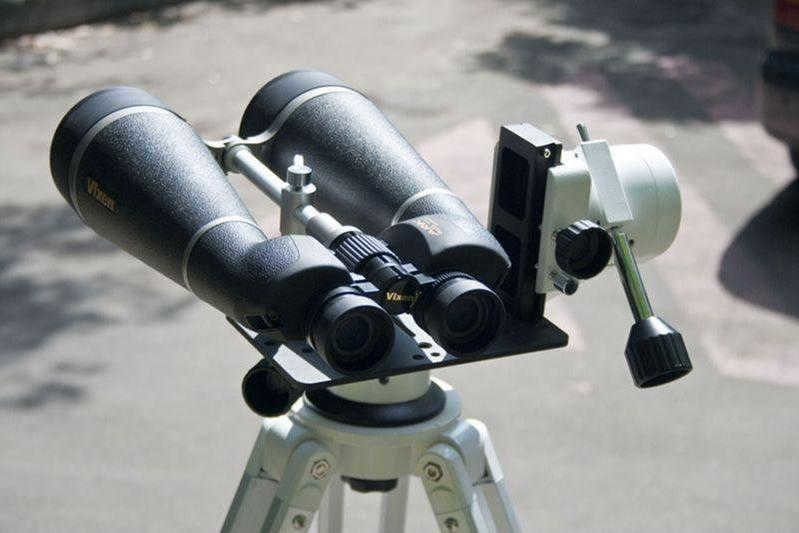

One of the models of astronomical binoculars.
However, astronomical binoculars can be quite bulky and heavy, making it challenging to hold them steady for extended periods of time. This can result in involuntary hand shaking. Additionally, when using binoculars with magnifications of 10x or higher, the image tends to “jump” when observing without any support. Therefore, it is recommended to use a tripod or some form of support, especially for astronomical binoculars with a magnification of 20x or higher. Without proper support, the image may flicker, making it difficult to observe celestial objects accurately.
Choosing binoculars based on their characteristics
When selecting binoculars, it is important to consider their unique characteristics. There are several parameters you can use to make the right choice:
- Aperture: This refers to the diameter of the objective lens and is one of the most crucial characteristics for any astronomical instrument. A larger aperture allows the lens to collect more light, enabling you to see fainter objects. Additionally, the aperture determines the maximum magnification that the binoculars can provide without compromising image quality. It is important to note that a small aperture may yield poor results. For astronomy purposes, it is recommended to start with a figure of at least 50 mm.
- Luminosity refers to the ratio of aperture to magnification, which is measured in millimeters and indicates the diameter of the exit pupil. If the diameter of the exit pupil is larger than the diameter of the eye pupil, some of the light will not reach the eye and will be lost, which is undesirable. The diameter of the eye pupil cannot expand beyond 7 mm, so it is easy to calculate luminosity. For instance, for 10×50 binoculars, the exit pupil would be 5 mm (50/10), which is smaller than the eye pupil, meaning that the binoculars collect all the light and allow it to enter the eye, which is beneficial. Therefore, it is important to consider the balance between aperture and magnification when selecting binoculars.
- A brightening is a colored coating on the lenses of binoculars that is clearly visible in the reflection when viewed from the side. It can have a hue of green, blue, or orange. The specific color of the coating does not have a significant impact, although there are recommendations to prioritize green or blue. However, if there is no coating or if it is of poor quality, it is not advisable to purchase such binoculars for astronomical observations.
These are the main factors to consider in terms of the optical aspect when selecting binoculars.
What to consider when selecting binoculars
Now that you have sorted out the optical part, it is time to choose the perfect binoculars for your observations. However, there are still a few factors to take into account:
- Binocular model – opting for a binocular from a reputable manufacturer is a wise decision. It is advisable to read online reviews and detailed specifications of the chosen model. Pay close attention to the quality of the optics. Otherwise, you may end up with a pair of binoculars made in China with plastic lenses or subpar optics. While this might be suitable for hunting purposes, it is not ideal for astronomy.
- Weight – a heavy pair of binoculars will require the use of a tripod. Without one, it will be challenging to hold the binoculars steady, resulting in shaky images.
- The integrity of the case is crucial – the binoculars must not show any signs of scratches or impact damage. This device is delicate, so if it has been dropped or hit, there is a high chance that the optics have been affected or something inside has shifted. It is advisable not to purchase such a specimen.
- The optics’ quality is essential – when examining the lenses and eyepieces, it is important to ensure that they are free of scratches and dirt, and that the lenses do not have any bubbles or other imperfections. The illumination should be consistent, without any signs of degradation.
- It is important for the image in both eyepieces to be aligned properly. If there is any misalignment, such as a shift in the prisms or uneven joining of the halves, the image will appear double. In such cases, it is not recommended to purchase the binoculars. One way to check for alignment is by looking through the binoculars at a flat line, like the roof of a house.
- All of this can be determined through a simple inspection of the binoculars before making a purchase, which only takes a few minutes. If any issues are found, it is better to avoid buying them. While the weight of the binoculars is not a critical drawback, it is a matter of personal convenience.
By inspecting the binoculars before buying, you can ensure that the image in both eyepieces is aligned correctly. Any misalignment, such as a shift in the prisms or uneven joining of the halves, will result in a double image, making the binoculars unsuitable for purchase. To test for alignment, simply look through the binoculars at a straight line, such as the roof of a house.
- It only takes a few minutes to inspect the binoculars before making a purchase, and if any issues are found, it is best to avoid buying them. While the weight of the binoculars is not a major disadvantage, it can affect convenience and comfort.
Beginners may have a range of inquiries before purchasing binoculars for astronomical observations. We will make an attempt to address a few of them.
What distinguishes astronomical binoculars from regular prism binoculars?
In terms of structure, practically nothing, except for a larger aperture – 70 mm or more, and a higher magnification compared to most field binoculars – 15x or more. Naturally, it is larger and heavier, so it is preferable to mount it on a tripod or mount.
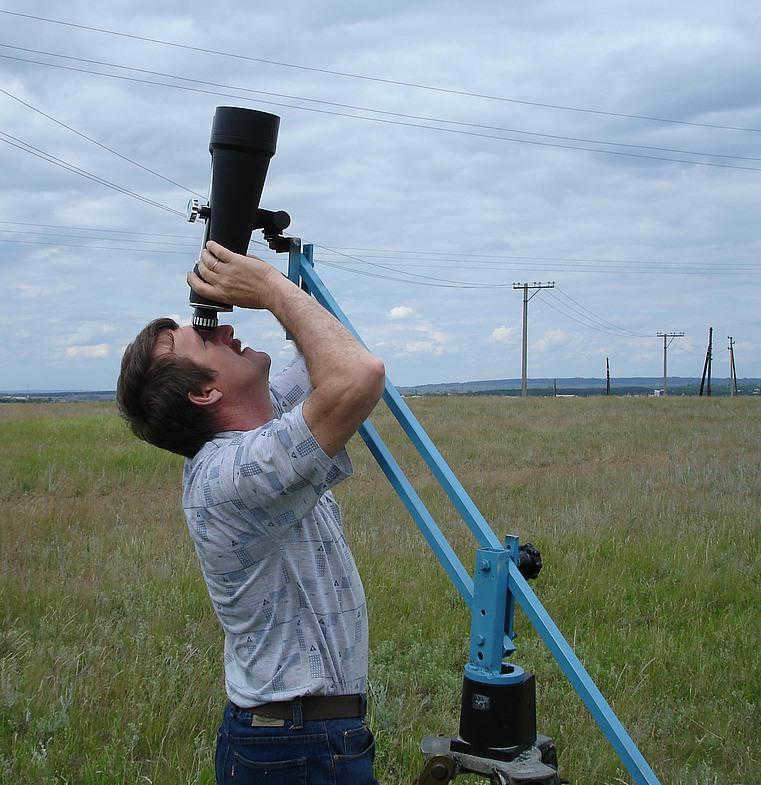
A handmade attachment for binoculars that enables observation of the near-zenith area.
Is it possible to utilize regular field binoculars for stargazing?
Definitely! They serve as a versatile tool, featuring an aperture of 30-60 mm and magnifications ranging from 6-30x. Amongst amateur astronomers, such binoculars are highly prevalent due to their affordability and quality. The most popular ones, with an aperture of 50mm and magnifications of 10x or higher, are convenient and lightweight, offering a variety of observations.
Can binoculars with image stabilization be utilized?
These binoculars are specifically designed for specific situations, such as being used on ships. They are equipped with a built-in microprocessor that regulates the movement of the prisms, counteracting any shaking and enabling you to obtain a stable image. While they can be used for observing celestial objects, it is important to note that they are relatively heavy and operate on batteries.
Is it possible to use binoculars if the visual acuity of the right and left eyes is different?
Yes, it is possible. Many binoculars have a separate focus adjustment on one eyepiece (usually the right one). This allows you to adjust the focus for one eye (usually the left one) and then use the eyepiece setting to adjust the focus for the other eye (usually the right one).
That’s all there is to it, now you know how to select binoculars for observing stars. It’s actually quite simple. I would like to emphasize that you shouldn’t just choose the first model you come across – it could be a poorly made Chinese imitation. First, check the model name and then search for information about it online – the specifications and reviews will provide you with valuable insights.
To assist you, we offer the opportunity to download the e-book “Exploring the Celestial Sky with Binoculars and a Telescope”. This comprehensive guide outlines what and how you can observe using these instruments.
Experienced astronomers opt to invest in ASTRO binoculars, even if they already possess telescopes. Why? Well, powerful binoculars also require a stand or tripod, which can limit mobility during use.
Now, let’s explore the three main advantages of binoculars:
- The three-dimensional vision effect: Two eyes are always better than one, making it easier and quicker to spot objects of interest.
- Enhanced color saturation: Binoculars boast quality optical coatings that provide a more vibrant and colorful image, while reflecting telescopes often lack these coatings, resulting in dimmer objects.
- When observing extended objects like constellations, scattered clusters, and nebulae, binoculars provide a 30-40% better view compared to telescopes. This is because many galaxies at high magnification cannot fit in the field of view of a telescope or telescope tube, but this problem does not exist when using binoculars.
This is the consensus among experts who have conducted tests comparing both optical devices.
Furthermore, astronomical binoculars not only offer a stunning view of the vast starry sky but also enable astronomers to make discoveries. Since the 1990s, when powerful astronomical binoculars were introduced, astronomers have used them to discover a multitude of new objects, particularly comets.
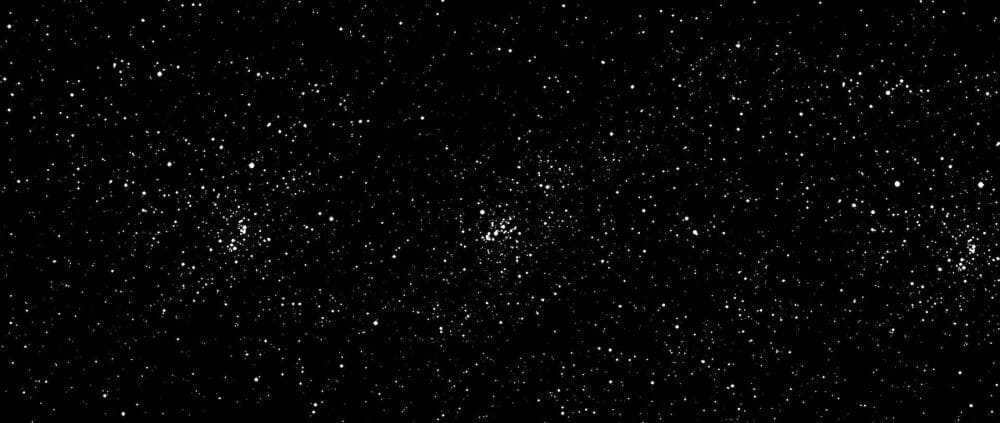
By the way, it is not always the power that determines the success of astronomers and their equipment. Other parameters, such as the luminosity of the optics, play a crucial role. Let’s compare the achievements of astronomers and their arsenal:
Number of celestial objects discovered
This includes 2 comets, including the famous “Great Comet Hyakutake”.
So, astronomers often start their hunting expeditions with binoculars. Once they spot their target, they use a telescope to observe and magnify it. If you enjoy combining outdoor adventures with stargazing, then ASTRO binoculars are the perfect companion for you.
Unique
These optical devices are known for their versatile design. They can be utilized for various purposes such as hunting, traveling, and urban or field conditions.
The three primary categories include:
- 8×40. This model provides a wide angle of view and is lightweight, eliminating the need for a tripod. It offers a moderate aperture and magnification, making it suitable for observing the Milky Way and tracing constellations. It is particularly convenient for the elderly, women, and children, although it is also commonly used by mature men.
- 7×50 binoculars are the most popular type because they make the best use of our eyes’ capabilities. They are not ideal for close-up observation, such as looking at the moon, but the quality of the image greatly depends on the lighting conditions. This is especially important to consider in urban areas with a lot of backlight or during “white nights”. These binoculars do not require a tripod and are commonly used for quickly finding nebulae, comets, and other celestial objects.
- 10×50 binoculars are the largest and heaviest among the universal models, and they can be inconvenient to use without a tripod. Because they have a narrower field of view, it is recommended to choose models with a wide-angle eyepiece. With these binoculars, you can observe planets in our solar system, comets, and even double stars even in areas with city lights.
Specialized
Have a magnification of x20 and above. As you can see, the resolution is too high for everyday tasks, but it presents fascinating opportunities for astronomers.
The specialization of astrobinoculars is linked to the interests of their users:
- “Lunar” and “planetary” binoculars with a low aperture (20×60, 25×70, 30×90);
- For studying galaxies and nebulae – with a high aperture and large aperture – the ability to gather light (8×60, 9×63, 10×70, 11×80 and 15×110);
- For observing the brightest galaxies and studying the structure of large nebulae, binoculars maintain the requirements for aperture and aperture, but the magnification increases (15×70, 20×80, 22×100, 25×150 and 30×180).
The most crucial choice
Observation scopes come with more than 50 parameters (ranging from the type of glass used to the materials of the housing) and around 10 additional options. These are discussed in greater detail in the comprehensive article. Here, we will only highlight the most important one, which is directly related to the nature of astronomers’ observation of the starry sky: prolonged observation.
It is well-known that when observing with a handheld device, as opposed to a stationary telescope, even slight movements can result in significant image instability. This effect is particularly noticeable at the edges of the image. For short-term examination of distant objects, it might be manageable by holding one’s breath or steadying hands on a solid surface. However, the observation of celestial bodies often extends throughout the entire night! In such cases, one’s eyes can become extremely fatigued. There are two methods to address this issue:
- Mounting the binoculars on a tripod. In this situation, it is important to ensure that the binoculars have a suitable tripod mount, which is typically threaded like a camera. While this is convenient, it does limit the advantages compared to a telescope in terms of the speed of searching for celestial bodies.
- Considering the Image Stabilization Option. Many astronomers opt for stabascopes for their observations. These binoculars can register even small and faint stars on the retina. We have a dedicated article on binoculars with image stabilization. Check out our separate article.
The top-rated models as recommended by astronomers
Once you have identified the fundamental features, it is essential to examine individual models. Here, we will focus on one of the most sought-after astronomical binoculars in each category:
Carl Zeiss 20×60 S
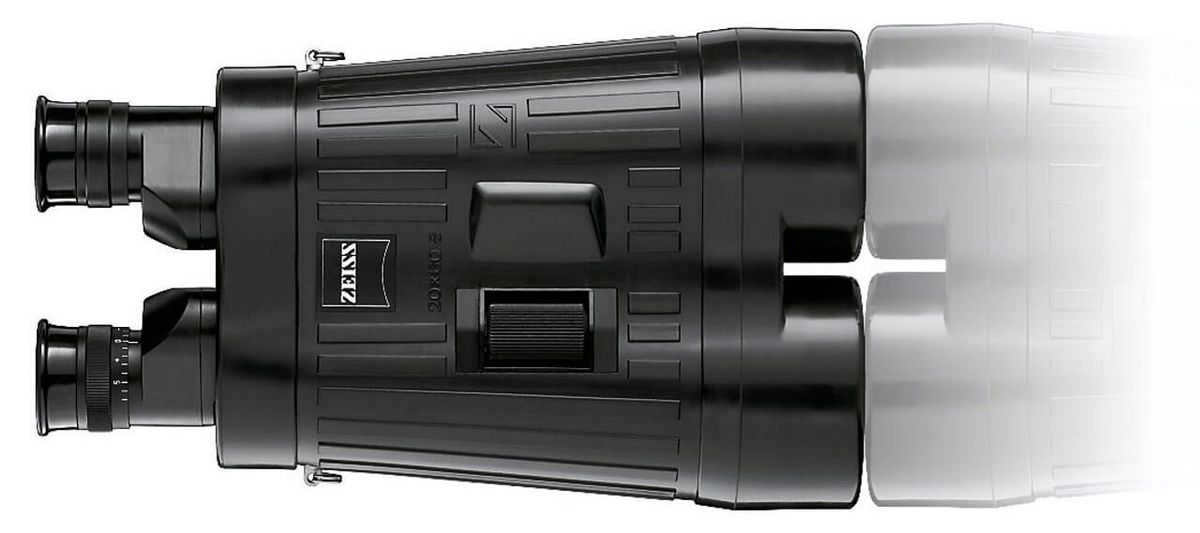
The Carl Zeiss 20×60 S binoculars have gained immense popularity despite their high price, mainly because they provide solutions to several key issues such as hand tremor, image stabilization, and moisture protection. Surprisingly, these binoculars can be used without a tripod and still deliver excellent results, although they are quite heavy. With a light transmission level of 95%, these binoculars require minimal lighting and allow for observing stars in complete darkness. Thanks to the LotuTec coating, they can even be used in the rain. The Carl Zeiss 20×60 S is highly reliable and requires minimal maintenance, making it well worth the investment.
PNB-2
PNB-2 is an abbreviation for Punjab National Bank, which is one of the oldest and largest banks in India. Established in 1894, PNB-2 has been serving the banking needs of the Indian people for over a century. With its wide network of branches and ATMs, PNB-2 offers a range of banking services including loans, deposits, and insurance. The bank is known for its commitment to customer service and has been recognized as a trusted financial institution in the country. PNB-2 aims to provide convenient and secure banking solutions to its customers, helping them achieve their financial goals.

The PNB-2 (Binocular Observing Device) 15*110 was manufactured by the Novosibirsk instrument-making plant, which is now part of the Rostec Corporation under the Shvabe brand. It is extensively utilized by the Russian Federation’s border guards and special services for monitoring ground and aerial targets.
Astronomers also appreciate this binocular. It is simple, reliable, and convenient, equipped with a lightweight tripod and large objective lenses. It is designed to protect against sunlight illumination and has a moisture protection system to shield the device from precipitation and dust.
With this instrument, no comet will go unnoticed if you embark on a “hunting” expedition.
Kenko SG-Z 20-100×30 N FMC
can be rephrased as “The Kenko SG-Z 20-100×30 N FMC is a unique optical device.”
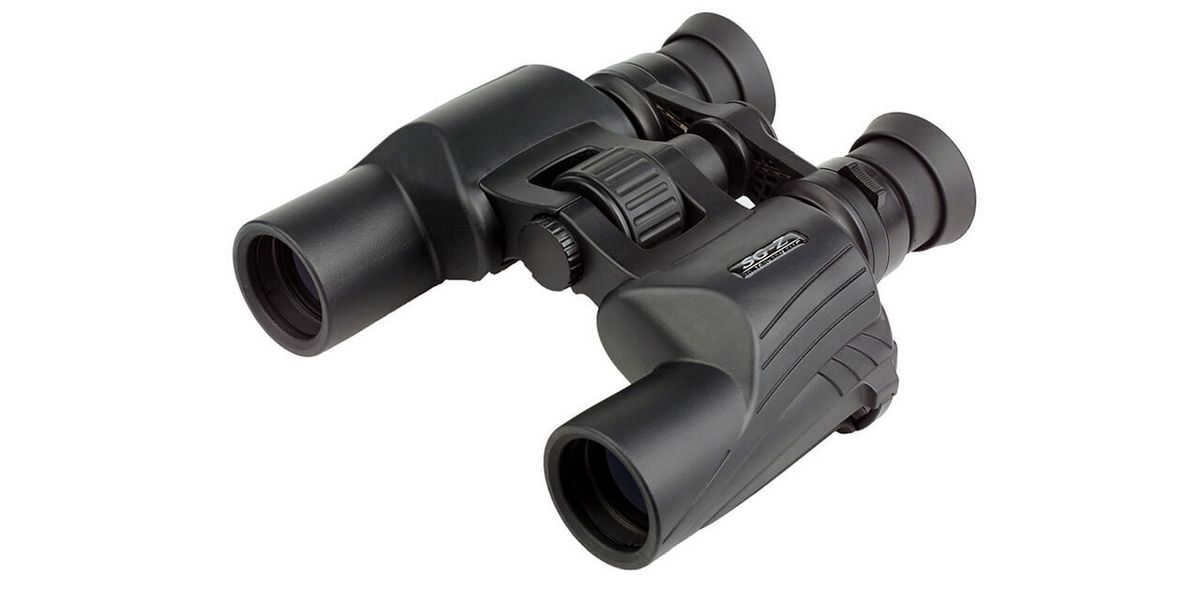
This is Japan. The Japanese have a knack for tackling complex problems, and they have successfully developed specialized astronomical binoculars that can be adjusted to the specific object being observed. These binoculars have a magnification range of 20 to 100 times, allowing you to get a closer look at celestial bodies. They also boast maximum light transmission and are waterproof, making them ideal for stargazing in different conditions. Despite their impressive features, these binoculars are compact and lightweight, weighing only 600g. Additionally, they come with a tripod mount for added stability if desired.
We hope that with these astronomical binoculars, you will be able to discover your own star or even spot an unknown comet during your astronomical “hunting” adventures.
If you need assistance in choosing the right astronomical binoculars for your needs, please don’t hesitate to reach out to us. We are here to help!
Welcome to our astronomy forum!
We are glad to have you here and we aim to provide you with insightful answers to your questions about amateur astronomy, based on real experience and knowledge, rather than mere speculation or superficial internet browsing.
If you choose to become a part of our community, we kindly ask you to adhere to these guidelines when contributing to discussions.
Topics of Interest: FAQS, Equipment reviews, and Eyepieces
How to select the appropriate astronomical binoculars?
Conversations on all facets of amateur stargazing: frequently asked questions, articles, and assessments, instruments and accessories, celestial objects and events, weather and phenomena.
How to select the appropriate astronomical binoculars?
Message AnDom " 06 May 2013, 00:13
There are many discussions about choosing telescopes, but not as many about choosing binoculars.
And I would like to clarify some of the guidelines for selecting astrobinoculars.
Magnification, aperture, field of view – everything is clear. If the resources and laws of physics allow, they should be as large as possible or at least present.
However, I am interested in hearing the professional opinion of an optician (specifically Ernest) rather than relying on a non-authoritative source.
For observing dark skies, it is often recommended to use binoculars with a 7mm exit pupil (such as 7*50 binoculars) that have an equal-opacity lens. What about permeability and resolving magnification?
There was a remark from Ernest about this on another forum, but unfortunately, it was not saved and cannot be located.
In general, what is the ideal exit pupil for binoculars? The size of the field is not a factor.
In other words, which binoculars will provide a better view: 7*50, 10*50, or 12*50, and why?
Ernest Founder Posts: 17037 Registered: October 12, 2009, 10:55 pm. Contact info:
Message Ernest ” 06 May 2013, 20:48
When it comes to magnification selection, binoculars are similar to other telescopic instruments. An exit pupil of 5-7 mm will provide the brightest and least contrasty image. On the other hand, an exit pupil of 2-3-4 mm will produce the most contrasty picture for different types of dipscale objects. For more extended objects, a 4 mm exit pupil is ideal, while a 2 mm exit pupil is better for more compact objects. If you’re looking to see stars in more detail, an exit pupil of 1-1.5 mm is recommended. For bright objects like planetary disks and the Moon, an exit pupil of 0.5-0.7 mm will provide the best level of detail.
Nevertheless, there are still certain limitations to consider when it comes to binocular observation and the use of high magnifications. Firstly, when observing handheld, it is difficult to effectively utilize magnifications greater than 12-14x without stabilization or a tripod. Secondly, the quality of aberration correction, particularly field aberrations, in binocular optics is not conducive to increasing magnifications as it tends to result in a blurry image. This is especially noticeable during night observation when the observer’s pupil is fully dilated, and the binoculars are working with the entire entrance aperture. Lastly, the presence of numerous thick optical components in the optical path, such as prisms for wrapping and adjusting the intercenter distance, also hinders the production of a high-quality image that would be desirable for viewing at higher magnifications.
For optimal nighttime observations, I suggest using handheld binoculars with exit pupils measuring 3-4 mm, such as 10×35, 10×40, 12×40, 12×50, and 14×50.
However, the primary focus should be on the quality of field aberration correction, which can be tested using stars during nighttime conditions when the observer’s pupil is fully dilated.
Rephrasing: How to select astronomical binoculars?
Text From: AnDom " Date: 07 May 2013, Time: 21:47
Rephrasing: How to choose the correct astronomical binoculars?
Text From: $ander " Date: 21 May 2013, Time: 12:38
Ernest, can you please rank the following indicators of handheld astronomical binoculars from most to least important: weight, aperture, and field?
Ernest Founder Posts: 17037 Posted: October 12, 2009, 10:55 pm. Contact info:
Re: Tips for selecting the perfect astronomical binoculars?
From: Ernest | Date: May 21, 2013, 14:19
It’s quite challenging to determine the ideal choice. However, I believe the key lies in considering three essential factors: magnification (to prevent shaky images), exit pupil diameter (calculated by dividing the aperture by magnification, which affects contrast), and the field of view of the eyepieces (determining how much you can see). In this case, I would suggest opting for astronomical binoculars with an exit pupil diameter of 3-4 mm, a field of view of eyepieces of at least 70 degrees, and a maximum magnification of 12x.
Message $ander ” May 21, 2013, 15:11
Alright, I will approach the topic from a different angle: which one is better, Baigysh 8×30 or 10×40? (The first one offers a wide field of view, light weight, and compactness, while the second one provides a larger aperture).
Ernest Founder Messages: 17037 Posted: October 12, 2009, 10:55 pm. Contact info:
Re: Tips for selecting the perfect pair of binoculars for stargazing?
Correspondence Ernest " May 21, 2013, 18:15
Re: Ways to pick the most suitable astronomical binoculars?
Correspondence Eugene Penkov " May 21, 2013, 18:18
Re: Proper techniques for choosing astronomical binoculars?
Correspondence AnDom " May 21, 2013, 18:40
It might be worthwhile. The quality is quite decent, considering the price. The center is especially sharp. There is some chromatic aberration, but it is not terrible and does not affect viewing the planets. A slight distortion should not be a concern. However, the field of view may be insufficient.
Based on my experience, any magnification (up to 20) allows for viewing but not detailed examination. Even at 7x magnification, it is uncomfortable. This issue can be solved with a monopod. I chose a 7×50 binoculars mainly because of the lower magnification and larger aperture. I have not encountered any contrast problems, perhaps because the intended use is different or there is no basis for comparison. It has been very helpful in winter for locating objects from the Messier catalog (I had difficulties due to lack of experience). Although I did not like the 12×45 Baigysh, mainly because of the field of view, I gave it away along with the 20×80 Celestron.
Re: Choosing the Best Astronomical Binoculars
Message from $ander on June 4, 2013 at 18:02
As I am planning to visit hunting stores to purchase a pair of binoculars, I would like to bring up a topic and ask about how to properly test them before buying.
Ernest, if possible, could you briefly explain a method for assessing the mechanics and optics of binoculars in real-time, while in the store during daylight hours?
P.S. I have diligently searched through the FAQ and Whychik sections of the forum, but I couldn’t find an answer.
Re: Tips for selecting astronomical binoculars?
Message from AnDom on June 4, 2013, at 6:50 PM
$ander asked: When visiting hunting stores to purchase binoculars, I would like to know how to test them on the spot to assess their mechanical and optical quality. Ernest, could you please briefly describe a method for evaluating binoculars’ mechanics and optics in store conditions during daytime? By the way, I couldn’t find an answer in the FAQ or Whychik, so I hope you can help.
Ernest Founder Posts: 17037 Posted: October 12, 2009, 10:55 pm. Contact info:
Re: how to select the right astronomical binoculars?
Message Ernest ” 04 Jun 2013, 20:22
$ander wrote(a): Ernest, if possible, could you briefly explain a similar approach to evaluating the mechanics and optics of binoculars, specifically when assessing them in person at a store during the daytime?
How to test the mechanics and optics of binoculars before purchasing?
- Hold the binoculars up to your eyes and focus on a well-lit object with varying levels of detail, such as an advertising poster or price tags located at the far end of the store.
- Next, we observe using both our eyes and make adjustments to the center-to-center alignment, assessing the effort and smoothness of the adjustment.
- Now, we simply need to assess the quality of the image. Typically, the center of the image is satisfactory, but it is still important to take into account any bright spots or glare from the light source. It is crucial that there is no vertical double vision (a concerning indication), no discomfort in the eyes when examining fine details at the limit of resolution, and no glare tails that move in sync with head movements (when using binoculars).
- Once you have ensured that everything is in order at the center, shift the object under consideration (preferably a bright point, a glare, a thin bright line, a small text on a price tag that is visible at the limit of resolution) to the periphery of the field of view in order to evaluate the extent of deterioration in the object’s visibility (aberration blurring in the field: astigmatism, chromatic aberration), and to check for any double vision at the edges of the field of view (both vertically and horizontally).
- Verify if there is any significant distortion in the field of view (test central focusing to observe if there is any variation in optimal focusing between the center and the edges of the field of view).
- Take a bright source of light within your field of vision and guide it from the center to the periphery (from left to right, from top to bottom). Observe carefully for any over-reflections or ghost images that may appear alongside the image of the bright object.
- Next, direct your binoculars towards a large light object such as a ceiling or wall. Move the binoculars approximately 250-300 mm away from your eyes and examine the shape of the exit pupils of the eyepieces. They should have a round and evenly shaped appearance, without any straight lines cutting through them. Additionally, ensure that the shape is symmetrical in both the left and right eyepieces.
- Take note of the field of view that can be seen through the binoculars – observe how much of the far wall can be seen within its field of view (use shelves, posters, etc. as reference points). Additionally, observe any distortion that may occur at the edges of the field of view, affecting straight lines.
- Lastly, thoroughly examine the binoculars that meet your preferences based on the previous criteria. Check for any glare or dirt on the lenses and eyepieces. Ensure that there are no foreign objects or fingerprints on the optics. Pay attention to the quality of the rubber coating – the binoculars should not slip on a flat surface and should have a firm grip even on smooth surfaces. Evaluate the packaging and the quality of the essential accessories such as the case and neck strap.
Re: How to select the appropriate astronomical binoculars?
From $ander " 04 Jun 2013, 22:03
I am extremely grateful! I can confidently print out this helpful guide and head to the store….
P.S. The content on your forum is rich enough to be compiled into a book. Have you ever considered it? It would hold a special place on my bookshelf (and I’m sure many others would agree).
Re: Choosing the Right Binoculars for Astronomy
From: Igor52 | Date: 05 Jun 2013, 05:26
$ander suggested: The content on this forum is so extensive, it could easily be turned into a book. Have you ever considered that? I would proudly display it on my bookshelf, and I’m sure many others would too.
I completely agree! Having a book would be incredibly helpful, especially for frequently asked questions and equipment reviews. Count me in!
Re: How to choose astronomical binoculars?
Message EvgenV “05 Jun 2013, 10:11”
I purchased a pair of binoculars with 10×50 specifications, but I ended up returning them the next day because they didn’t meet my expectations. One of the main issues was that they showed chromatic aberration, especially when viewing objects in direct sunlight. Even the white plastic windows of the house across the street had a green-purple coloration. Additionally, the field of view was not very large, and the stars appeared as small points, only covering 50% of the field. I also tried a cheaper option, the Weber Classic 10×50 by Nikon, but it had similar issues with chromatism and didn’t offer a better image quality despite being four times cheaper. As a result, I decided to purchase a vintage pair from the 1970s on eBay, which is still Japanese-made. The model is the Swift Newport 10×50, with a field of view of 122 meters at 1000 meters (7 degrees). I’m currently waiting for it to arrive, and I’m also interested in finding a binocular with a wider field of view, around 12-13 degrees.
Re: Tips for selecting the perfect astronomical binoculars?
Message Angler “05 Jun 2013, 11:18 AM.”
If you’re wondering how to choose the right astronomical binoculars, I suggest reaching out to the salesperson who sold you the Nikon binoculars and asking about their origins.
I’ve personally used the NIKON Action VII 16X50, 10X50, and currently own a 12X50 model. Throughout my experience, I haven’t encountered any significant issues with any of these binoculars. While there may be superior options available, Nikon’s reputation for quality has never been the cause of any observation-related problems.
Re: How to select the appropriate astronomical binoculars?
Message EvgenV “05 Jun 2013, 12:11”
FishOk wrote(a): I suggest inquiring about the origin of the high-quality item from the salesperson who sold you the Nikon binoculars.
I have used the NIKON Action VII 16X50, 10X50, and currently have a 12X50. I haven’t encountered any significant issues with any of these binoculars. While there might be superior options available, Nikon’s quality has never caused any problems during observation.
Indeed, it is the NIKON Action VII, specifically the 10×50 model. I made the purchase from Sotmarket and everything seemed genuine, with the presence of the Nikon warranty. It was a pleasant experience. However, upon returning it, I visited a local store that sells binoculars, and to my surprise, they had a similar quality product for a price of 6500r. The build quality of the case was impressive, unlike the Weber binoculars which had glued leather and loose covers that easily fell off the lenses and eyepieces even with minimal shaking. Although the Soviet binoculars produced by GOMZ, the 6×30 model, lacked brightness, it provided an incredibly sharp image across approximately 90% of the field. Only the very edge, equivalent to one small division of the rangefinder scale, appeared slightly blurry. The stars were not elongated into streaks but rather slightly defocused. I found it difficult to accept the fact that the NIKON binoculars had distortions across half of the field when observing stars. The distortions were less noticeable when observing objects on the ground, approximately 3/4 of the field was acceptable, but further beyond that, the smearing became quite noticeable. If it weren’t for the issues of loose parts and falling covers, I would have preferred to keep the Weber classic as it provided a good image quality for the price.
Re: How to select the perfect pair of binoculars for astronomy?
Message AnDom " 05 Jun 2013, 18:10
Re: How to choose the right binoculars for stargazing?
Message EvgenV " 05 Jun 2013, 18:40
A Fujinon Polaris is an even better option… but in our area (despite being Olympic), the most popular binoculars for stargazing are the Nikong Action and Akulon models. Unfortunately, the EX series is not available here. The majority of binoculars available are the cheap Weber models in various formats and colors, making up around 70% of the selection. The remaining 30% is divided between Yukon, Nikon junior, Olimus junior, and Russia junior models. Therefore, we will consider purchasing from eBay to find a wider range of options.
Re: How to select astronomical binoculars?
Message AnDom ” 05 Jun 2013, 19:18
EvgenV mentioned that a Fujinon Polaris is an excellent option, but in our area (despite being Olympic), the most exciting binoculars to observe with are Nikong Action and Akulon. The EX series is not even available here. Instead, we have a wide selection consisting of 70% inexpensive webers in various formats and colors, 10% Yukon, 10% Nikon junior, 5% Olympus junior, and 5% Russia junior models. Therefore, we will explore what is available on eBay.
Rephrased: How to select binoculars for astronomy?
Message from $ander on June 13, 2013 at 14:22
Has anyone had the opportunity to test these binoculars: Unsoldt Hetzlar 8×30? They seem to be a rare German brand.
Rephrased: How to choose binoculars for stargazing?
Message from AnDom on June 13, 2013 at 17:58
I could be mistaken, but I believe these binoculars are from the German army, possibly with involvement from Zeiss. There were some similar ones listed on eBay.
Re: selecting the correct astronomical binoculars
Message from Aliot on June 20, 2013 at 19:52
Hello esteemed members of the forum, greetings Ernest.
Allow me to partake in the ongoing discourse regarding the selection of astrobinoculars and offer my perspective on this matter.
I recently came across an experiment conducted by a knowledgeable individual on the hunting forum Guns.ru, who goes by the pseudonym Korova.
He conducted the following experiment: while observing through a hunting scope with adjustable magnification, he increased the magnification and took note of when the image started to darken. The results were consistently the same: with an exit pupil of 7mm, despite the lighting conditions and his age (as per his statement), his eye’s pupil size could not exceed 5mm. The forum members were unable to determine the reason behind this phenomenon. Intrigued, I attempted to replicate his experiment. The scope I used was 3-12/42. The conditions were as follows: deep twilight, a dark gray sky, a bright streetlight located 300m away and slightly to the side, and a large apartment building with brightly lit windows situated 600m in the opposite direction. I did not measure the size of my own pupil (as I am unsure how to do so), but considering my age and the lighting conditions, it was unlikely to be more than 4.5-5mm. While looking through the scope at the dark gray sky and stars, I gradually increased the magnification, starting from 3, and observed the level of brightness in the sky. Strangely, as I increased the magnification (and consequently reduced the diameter of the exit pupil), the brightness of the sky did not intensify. However, at a magnification of 6, the image appeared to darken (with an exit pupil size of 7mm), and at a magnification of 7, the picture noticeably darkened (with an exit pupil size of 6mm)! According to theoretical calculations, considering the size of my pupil (~5mm), this should have occurred at a magnification of 8.5.
I concur with Korova’s conclusion: a proper binocular must possess an exit pupil of 7mm. Additionally, in my opinion, this holds true for astronomical binoculars, which should also incorporate an age correction of at least 5-6mm. I will further elaborate on this matter in the subsequent discussions.
So, this is my viewpoint. I eagerly await your comments.
Re: Tips for selecting the perfect pair of binoculars for stargazing?
From Aliot – June 20, 2013, 20:41
Here are two additional observations I made:
1. I compared the Fujinon fmt 10×50 binoculars with the Selestron 25×100 binoculars. I observed the object M31. The Selestron binoculars had a very narrow field of view, only about 3 times the diameter of the galaxy. In the Fujinon binoculars, M31 was visible about 2.5 times smaller, but with the same level of detail. I couldn’t see anything new or additional in the Selestron binoculars compared to the smaller Fujinon binoculars. However, the picture in the Fujinon binoculars was noticeably sharper, clearer, and brighter. Additionally, after using the Celestron binoculars, looking through the Fujinon binoculars felt more relaxing and restful.
2. I compared two Fujinon fmt binoculars, one 10×50 with a field of view of 113m and the other 10×70 with a field of view of 93m. I conducted this observation during twilight. I fixed the binoculars in the center of a new, uninhabited house, and there was an advertising poster on the edge of the house. The poster was located at about half the distance between the center and the edge of the field of view in the Fujinon 10×50 binoculars and even closer to the edge in the Fujinon 10×70 binoculars. The result was that when the binoculars were stationary, the brightness of the center of the picture (the center of the house) was the same, but the poster was noticeably brighter in the Fujinon 10×70 binoculars.
From these observations, I drew the following conclusions:
1. Astrobinoculars are primarily survey instruments for observing extended nebulae, both light and dark. For detailed observations of planets, comets, and deep space objects, a telescope is necessary, or in some cases, a telescope can be used for observing the moon, Jupiter, and Saturn.
2. The exit pupil of astrobinoculars should be 6-7mm, but no less than 5mm.
After much consideration, I chose the 10×70 binoculars over the 16×70 binoculars. This decision went against Ernest’s recommendations. The 16×70 binoculars offer higher magnification, but it is unclear what advantage this provides. The 10×70 binoculars, on the other hand, allow the human eye’s pupil to move along the exit pupil of the binoculars, similar to a mini-screen on a TV. This eliminates the moon-shaped shadows that can be seen when using binoculars with lower magnification. With the 10×70 binoculars, it is also easier to use them without a tripod. While the 10×70 binoculars may not fully utilize the aperture due to the size of the human eye’s pupil, the comfort of observation, larger field of view, and longer eye relief (23mm compared to 15mm in the 16×70 binoculars) make them a better choice, especially when observing in cold conditions (less risk of eyepiece fogging).
I would appreciate any comments on my observations, especially from you, Ernest. I hope you are available and can provide feedback on my posts.
For those who have been aspiring to join the world of amateur astronomy for quite some time, the main obstacle often comes in the form of not having a telescope. However, it is safe to say that initially, one can still pursue this hobby without a telescope, especially if they have a handy tool like binoculars at their disposal.
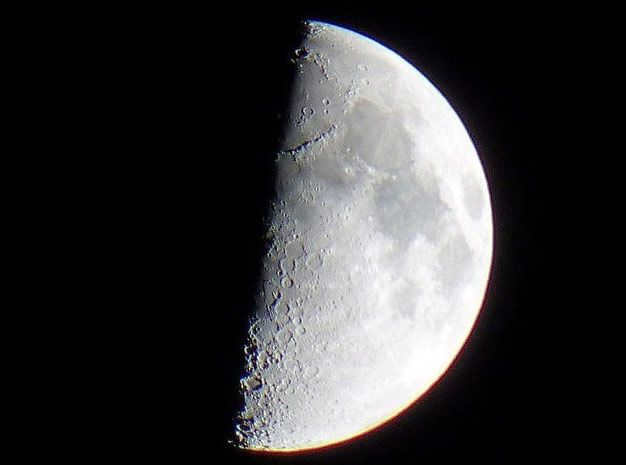

Observe the Moon using a pair of 10×50 hunting binoculars. It is a great tool for casual stargazing, as everything is clearly visible without the need for a telescope. Just make sure to steady the binoculars against a wall or windowsill to prevent shaking 🙂
It is worth mentioning that binoculars have several advantages over telescopes as a beginner’s tool for observing the night sky.
- Even a good pair of binoculars is usually cheaper than a mediocre telescope of comparable quality.
- Binoculars are more compact than even the most compact telescopes.
- Binoculars have multiple uses, including observing stars and other objects.
- When it comes to observing the starry sky and celestial bodies, binoculars provide a direct image that is easier to compare with the naked eye or star maps. Telescopes, on the other hand, produce an inverted image.
Furthermore, the wider field of view offered by binoculars makes them essential for studying star clusters, exploring the Milky Way, and observing comet tails. These objects may not be bright enough to see with the naked eye, but they can be difficult to distinguish when viewed through large telescopes with high magnification.
Binoculars can be used to observe a wide range of space objects, including:
- Artificial Earth satellites
- The Moon
- Bright asteroids
- Satellites of Jupiter
- Uranus
- Comets
- Variable stars
- Binary stars
- Star clusters
- The Milky Way
- Galaxies
Choosing the Right Binoculars for Stargazing
If you happen to have an old theater binoculars with low magnification, it can still be useful for observing the Milky Way at some point. However, for more serious observations, it is recommended to purchase a pair of prism binoculars.
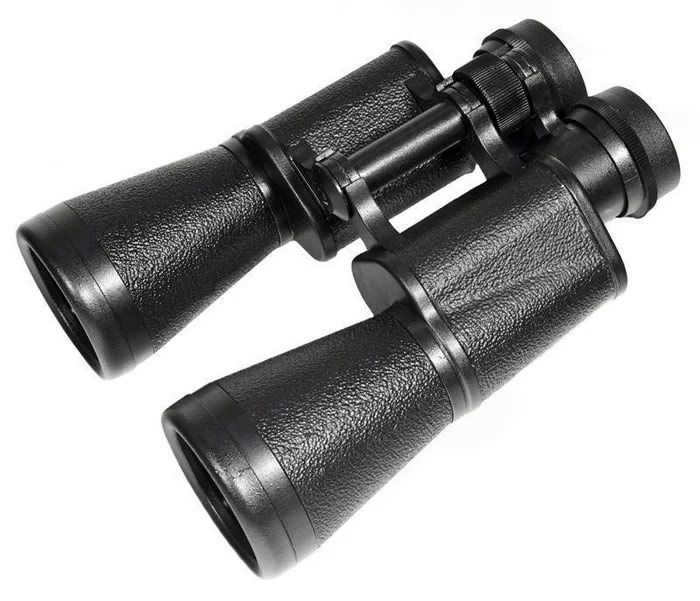

Classic – BPC-2 12×45 binoculars. When I was gifted with one as a child, it made me the happiest person in the entire world 🙂 Perfect for aspiring astronomers
When making a purchase, it is important to consider not only the price but also the specifications of the binoculars. The most crucial ones are the magnification and aperture (the diameter of the objective lens, typically measured in millimeters). These specifications are usually indicated on the body with two numbers, such as “8 x 40”, which denotes a magnification of 8 and an aperture of 40 mm.
When using any instrument like binoculars, it is important to consider the size of the exit pupil. The exit pupil is the diameter of the light beam that comes out of the eyepiece. It should not exceed the size of the eye pupil, which is typically around 7-8 mm in diameter in the dark. If the exit pupil is too large, some of the light collected by the objective lens will not reach the eye.
Most commercially available binoculars offer a small magnification and have an exit pupil that exceeds 8 mm. However, binoculars with an exit pupil smaller than 5 mm provide greater magnification and are more suitable for observation. They do require a rigid mount when observing and are best used during daylight hours. These binoculars typically have a field of view of 5-7°.
When observing in areas with a highly illuminated sky, binoculars with high magnification can be particularly useful. These binoculars have a small field of view, which reduces the amount of extraneous light that enters them. However, this small field of view can make it challenging to locate celestial bodies in the sky. On the other hand, the high magnification allows for easy observation of Jupiter’s satellites, double stars, and numerous star clusters.
One apparent drawback of high magnification binoculars is the difficulty of using them. Any binocular with a magnification greater than x10 or even x8 requires a special mount.
Typically, binoculars that are more expensive tend to be sturdier, with more robust prism mountings, making them less prone to disconnection or unmounting. Of course, binoculars that allow for individual focusing of each eyepiece are preferred, although they are not as common as binoculars with a general focusing mechanism.
In the case of binoculars, the light beam goes through at least 8 reflections, so in order to minimize light loss during reflection, the glass surfaces are coated with special thin films known as optical luminescence.
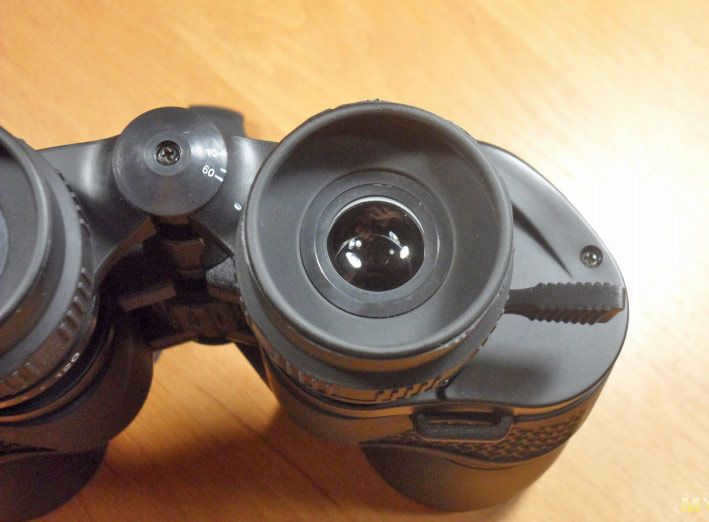

Basically, even if you don’t possess any knowledge about binoculars, just take a thorough look at the lenses, color rendering, and the “straightness” of the lines. Are you satisfied with everything? Go for it and make the purchase.
Tips for Evaluating the Quality of Binoculars
First, try moving the binoculars away from your eyes about 10 cm while keeping one eye closed. The image should remain clear and single, indicating good quality.
Next, at a distance of approximately 30 cm, you should see a perfectly illuminated circle, which is the exit pupil of the binoculars. This means that the light has passed through the prisms effectively.
It’s important to check the alignment of the two optical systems in the binoculars. Misalignment can cause eye strain and headaches.
To test for lens coatings, look at a light bulb’s image reflected from the lens and eyepiece. If the image is colored, it indicates the presence of coatings. If the image is not colored, coatings may be absent.
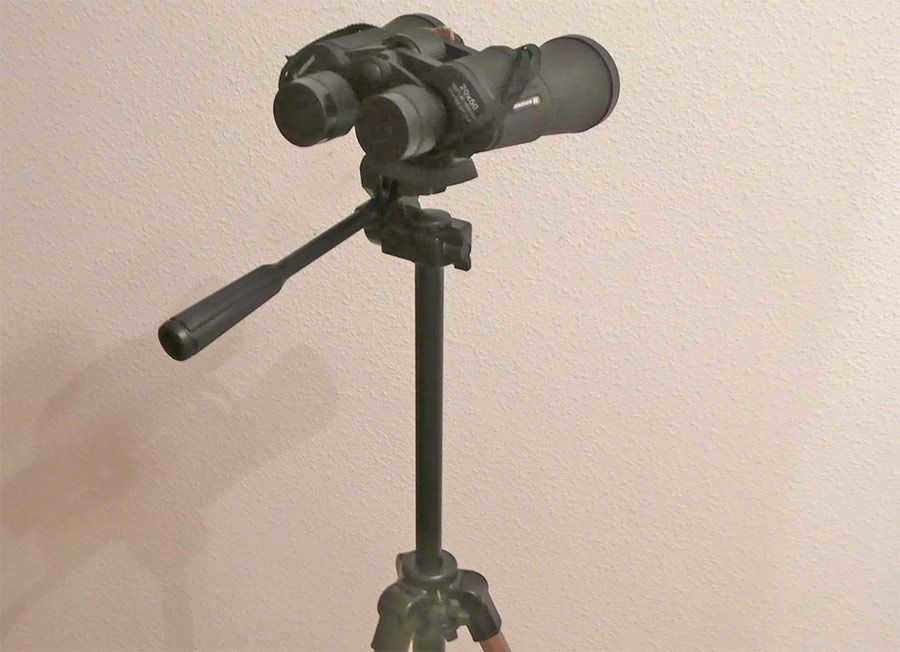
Binoculars on a tripod (tripod) for a camera. Yes, it’s not very convenient to gaze at the sky above you, but it remains stable and allows you to keep your hands free.
Tips for observing the stars with binoculars
Both fixed telescopes and fixed binoculars enable you to view much fainter stars and finer details on celestial objects.
Any type of fixed mounting for binoculars is better than not having one, so in extreme cases, binoculars can be secured to a wall or pressed against a tree trunk.
A camera tripod can serve as a stand, but it is challenging to observe celestial bodies high above the horizon. Many observers find it comfortable to make observations while sitting in a regular folding chair with armrests. It is desirable to have a binocular mount that allows you to keep your hands free.
To eliminate any unwanted light that can interfere with observations, it is important to create rubber gaskets to protect the eyepieces. These gaskets are beneficial in any situation. To prevent the lenses from fogging up, an anti-fogger can be used. Although fogging is uncommon with eyepieces, combating this unpleasant phenomenon can be quite challenging.
Source: Adapted from various sources, including the book “ABC of the Starry Sky” by Storm Dunlop, published by “Mir” in Moscow, 1990.
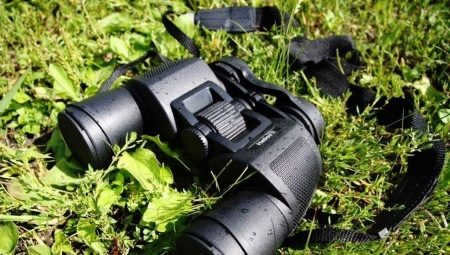
Expensive optical equipment, known as quality binoculars, finds its application in various domains. Individuals utilize high-powered binoculars for activities such as hunting, tourism, and astronomical research. Given their steep price, potential buyers must exercise caution during the selection process to avoid any future regrets. This article will outline the most potent binocular models, while also highlighting key factors to consider when making a purchase.
Overview
For centuries, binoculars have been a valuable tool for observing distant objects. However, their usefulness is not limited to just magnification. One of the key features of binoculars is their ability to provide stereoscopic vision. By using both eyes to view an object, the field of view expands by 15-20% and the image appears more three-dimensional.
While traditionally used by astronomers, military personnel, sailors, and hunters, powerful binoculars have recently gained popularity among tourists and outdoor enthusiasts as well.
When selecting optical devices, the most crucial factors to consider are the size of the lenses and the level of magnification. These specifications determine the intended purpose and usage method of the device, so the numbers are typically indicated on the device’s body alongside the brand and product line name. For instance, the labeling of Barska Floatmaster 10×30 can be deciphered as follows: Barska represents the brand, Floatmaster is the product line name, and 10×30 denotes the magnification (10x) and the lens diameter (30 mm).
Many people believe that the effectiveness of an optical device solely relies on the level of magnification: the higher the number on the label, the better the zoom. However, this is not entirely accurate. Different activities require different optimal levels of magnification to ensure the most comfortable usage experience.
When it comes to modern long-range vision optics, there are two different arrangements of prisms: Porro technology and Roof technology. The Porro system arranges the prisms in a way that the lens axis and eyepiece axis are positioned on separate lines. This design makes the device wider and less compact, but it is known for producing high-quality images. On the other hand, Roof systems are more compact because the eyepiece, prisms, and lens are all aligned on the same line, resulting in a more ergonomic device. However, achieving high image quality with this system requires precise calibration, which inevitably increases the cost.
There are modern advanced models available that come with built-in systems to measure the distance to the object being observed. Additionally, many binoculars are equipped with compasses, shock-resistant sealed cases, and special protective covers. In today’s market, the range of binoculars is incredibly vast. Therefore, it is important to do your research and familiarize yourself with the top high-performance models before investing in such expensive equipment.
Top-rated models
When it comes to selecting binoculars, it can be challenging to assess its quality without putting it to practical use, especially when dealing with high-powered optics in a store setting. To ensure a smooth and successful purchase, it is crucial to determine your desired magnification, image quality, and size of the device in advance, as well as establish a budget. We present to you a comprehensive list of the finest binocular models, both domestic and international.
Այսօր, շուրջ աշխարհում գտնվում են շատ արտադրանքային արտադրանքներից քանի՞ որ բազմաթիվ մարզական մոդելները նայում են մեր եզրերին։
Ռուսական արտադրանքային երաշխավարները սպասարկում են հասարակական կառավարմանը։ Ռուսական արտադրանքային երաշխավարները բնականում են ամբողջական կառավարման, մատչելի գնորդության և բարձր որակի օպտիկական էլեմենտների հետ։ Մենք առաջարկում ենք հաշվել մի քանի մեծ տեսակավորման մոդելները, որոնք արտադրվում են Ռուսաստանում։
The device is specifically designed for long-range observation of distant objects. It is equipped with a built-in central focusing mechanism, which makes it effortless to adjust the image quality.
Additionally, it features a right eyepiece adjustment, allowing individuals with visual impairments to comfortably use the device.
For those interested, there is an option to order the device with a ruby lens coating. This coating enhances contrast in low-light conditions and provides eye protection from glare during daylight hours. The BPC Binoculars “Baigysh” 15×50 also comes with a comprehensive package, including a soft neck strap and a convenient belt-attachable bag. This product falls within the mid-range price category.
Veber Omega Trofi BN 10×42
Durable binoculars suitable for use in extreme conditions. These binoculars are equipped with a dual bridge system that effectively absorbs shocks and vibrations, ensuring that the optical mechanism remains undisturbed. The binoculars are nitrogen-filled to prevent fogging of the lenses due to temperature fluctuations. The body of the binoculars is constructed with a metal frame and covered with rubber, making it water-resistant for short-term immersion. Featuring roof prisms and VAK-4 optics, these binoculars deliver a high-quality image with excellent light transmission of over 90%. With its impressive performance and affordable price point, this powerful device falls into the mid-range category.
KOMZ BPC7 “Baigysh” 8×30
These binoculars are versatile and perfect for observing distant objects in daylight. The binoculars are designed with the Porro system and have a metal body. They also feature convenient central focusing and additional adjustment for the right eyepiece. The standout feature of the KOMZ BPC7 “Baigysh” 8×30 is its two axes that allow for compact folding, making it ideal for travel. This ergonomic device provides high-quality observations, thanks to its “VAK-4” optical glass that effectively transmits light without blurring the edges of the image. It falls within the mid-range price category.
International
International optical devices typically have a higher price tag compared to their domestic counterparts, but their superior quality makes them worth it. We present to you a selection of high-powered binoculars from various countries around the world.
Delta Optical Sailor 8×42
Binoculars from a Polish brand that are designed for handheld observation of objects. These binoculars utilize the Porro system, which creates a 3D effect and enhances depth perception in the image. The large entrance lenses provide a wide field of view, and the optical glasses are coated to improve light transmission and enhance image quality. The robust Delta Optical Sailor binoculars are built for use in extreme conditions, with shockproof housing and protection against lens fogging caused by temperature changes. The lenses are recessed about 1-1.3 cm into the body, providing protection against dirt and moisture. This product is classified in the mid-range price category.
Nikon Aculon A211 16×50
These Japanese binoculars come with powerful aspherical lenses that allow for magnification of objects up to 16x. The device is equipped with multi-layer optical glasses with an enlightening effect, enabling the viewing of objects even in low light conditions. Nikon Aculon A211 is highly compact due to its Porro prism system, yet it offers a viewing range of approximately 70-75 meters.
The special rubberized pads are designed to provide comfort during extended use, as they do not apply pressure on the eyes and are rotatable. However, it is worth noting that this device comes with a higher price tag.
Chinese binoculars are known for their excellent picture accuracy and easy focus calibration. While the zoom level of these binoculars is fixed, the large objective lens, combined with it, offers a great view that is perfect for activities such as hunting, fishing, and admiring landscapes. The binoculars are equipped with powerful, high-quality lenses that enable clear viewing even in low light conditions. Moreover, the focus adjustment is synchronized, allowing for simultaneous adjustment of both tubes. Additionally, the price of these binoculars is slightly lower than the average market price.
Bushnell 10×42 H2O Roof
These portable binoculars, made in the USA, are equipped with a unique system that enables focusing at an unprecedentedly close distance – just 3.6 meters. The device’s design offers a wide field of view, covering 102 meters within a 1 km radius from the observer. The convenient central focusing mechanism ensures clear visibility of objects at distances of 3.6 meters and beyond. Additionally, the presence of nitrogen within the binoculars prevents fogging of the prisms, lenses, and eyepieces, even when exposed to sudden temperature changes. Originally designed for military sailors, these binoculars are completely sealed and waterproof, thanks to their rubber sealing rings, making them impervious to water damage.
The RainGuard HD technology is worthy of special mention as it enables comfortable use of the scope even in unfavorable weather conditions. The textured body design prevents slippage while holding the device, and its lightweight of 708 g ensures minimal strain on the hands. Bushnell 10×42 H2O Roof is a top-tier binocular designed for professional use, hence its higher price range.
Steiner Navigator Pro 7×30
These powerful binoculars from Germany are not only equipped with high-quality optical components, but also feature a range of other useful mechanisms. In addition to the superb optical elements, this device is also equipped with a built-in rangefinder that accurately determines the distance to the observed object, as well as an illuminated compass. The prisms inside the binoculars effectively reflect light, while the multi-layer lenses ensure optimal brightness and contrast for a clear image.
How to determine the magnification level?
The magnification level of binoculars is a crucial factor that determines their power and is usually indicated on the labeling of each model. However, it’s important to note that some manufacturers may round up the magnification level of the lenses, which can lead to confusion and potential purchase of a device with insufficient power. To ensure accuracy, you can measure the exact magnification level yourself using a caliper.
Start by measuring the diameter of both the front lenses and the eyepieces, and then divide the first value by the second. This will give you the precise magnification level of the binoculars. It’s worth mentioning that the measured values may not always match the stated magnification level, especially when dealing with lower-priced models.
The prism arrangement system determines the effectiveness of binoculars. The Roof system is known for its reliability and durability. On the other hand, the Porro system offers excellent picture quality, but only after precise calibration.
Factors to consider when choosing binoculars
When selecting binoculars, it is important to consider the magnification level and the intended use of the device. Higher magnification levels result in a narrower field of view. Additionally, binoculars with higher magnification (20x and above) are typically used with a stand and are not suitable for field or extreme conditions. To assist you in selecting a powerful binocular, we provide an overview of models with different magnification levels.
- Ranging from 6 to 9 times magnification. Perfect for field use: they are compact and lightweight, and offer excellent visibility while hunting, fishing, and hiking.
- Magnification from 10 to 14. Larger professional models that can still be used in the field, but for shorter periods of time. These models are often used in a stationary manner, with the device mounted on a tripod.
- Ranging from 15 to 22 magnification. High magnification products that are only used when mounted on a tripod. They are utilized by sailors and military personnel for observing distant objects, as well as astronomers for studying celestial bodies that are minimally distant from the Earth.
- Exceeding 22x magnification. Astronomical instruments that are used on par with telescopes.
What are the most potent binoculars globally?
The binoculars that possess the greatest power are those that boast a high magnification (ranging from 50 to 100x) and an impressive diameter for their entrance lens. These colossal devices find utility in military and naval applications for long-range object observation, as well as in astronautics for the study of celestial bodies and star clusters.
Nevertheless, each individual model serves a specific purpose and possesses its own set of advantages and disadvantages, making it nearly impossible to definitively determine the most potent equipment.
The Canon 70×70 binoculars are widely used by the military and sailors and are considered to be the most popular and powerful binoculars for observing objects on Earth. These binoculars are equipped with 50mm diameter entrance lenses and a high-quality optical system, providing a wide field of view – 122 meters at a distance of 1 km from the observer. To ensure comfortable use, it is recommended to mount the binoculars on a tripod as handheld observation at this magnification is impractical.





